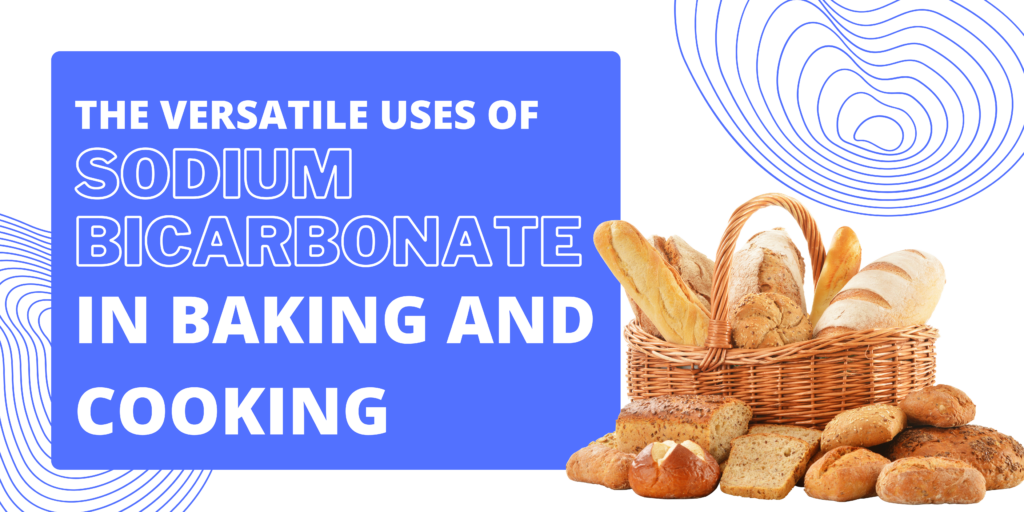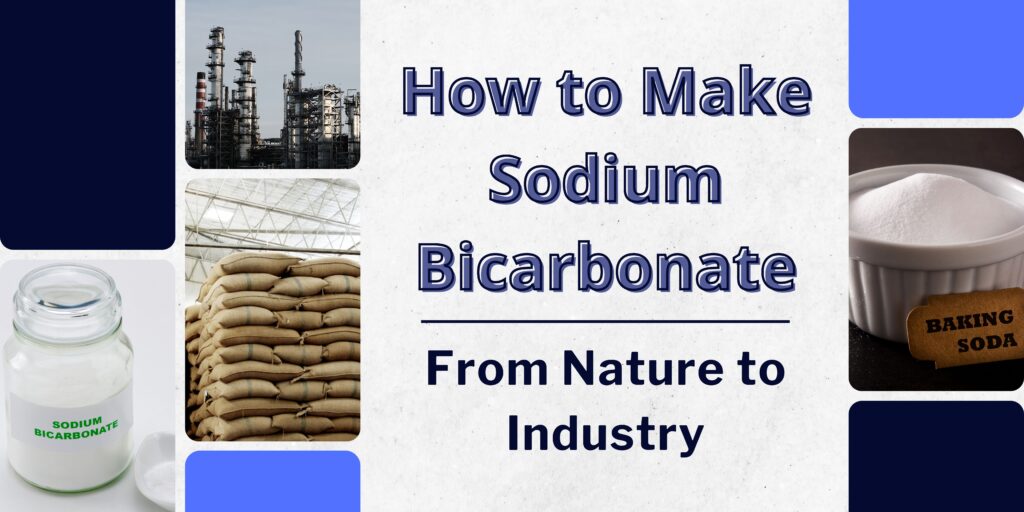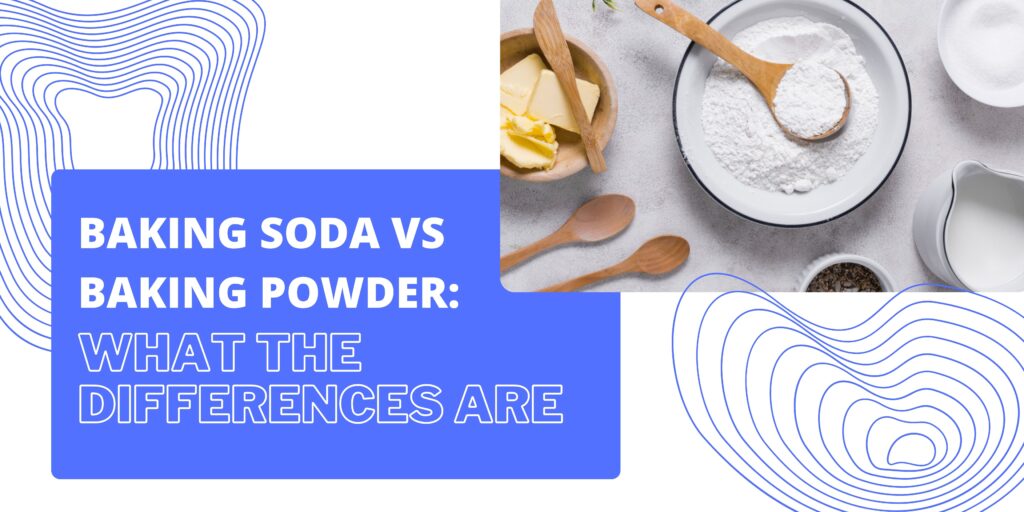
The two ingredients that are necessary for baking are baking powder and baking soda. Despite their apparent similarity and frequent interchangeability, they have various uses in recipes and can produce different outcomes. Comprehending the distinctions between baking powder and baking soda is essential for proficient baking. We shall examine the chemistry, uses, and unique functions of baking powder and soda in baking in this extensive post.
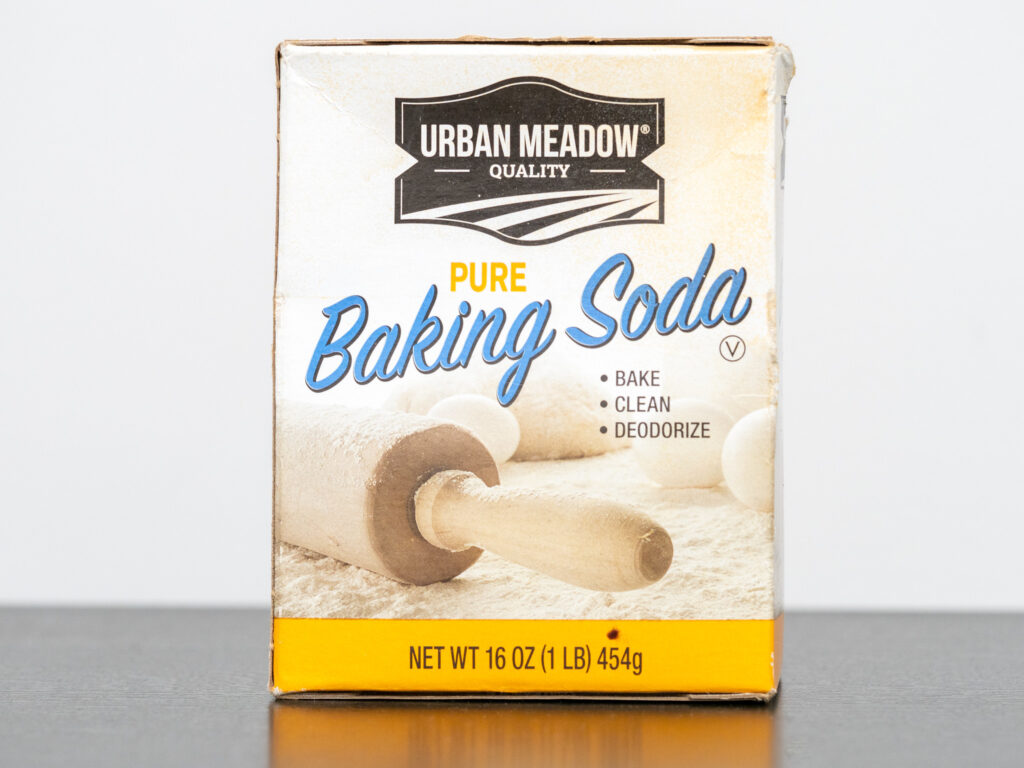
The Basics of Baking Soda
Sodium bicarbonate (NaHCO3), or baking soda, is a white, crystalline powder used for a variety of purposes in both the culinary and non-culinary arts. Its basic characteristic is that when it combines with an acid or a liquid that has an acidic component, it releases carbon dioxide gas. For many baking recipes, this reaction is essential.
The Chemistry of Baking Soda
Baking soda is an alkali, and when it combines with an acid in a recipe, a chemical reaction occurs. The primary acid-neutralizing reaction can be summarized as follows:
NaHCO3 (sodium bicarbonate) + H+ (acid) → H2O (water) + CO2 (carbon dioxide) + Na+ (sodium ion)
The carbon dioxide gas produced during this reaction is responsible for making baked goods rise and become light and fluffy. This is why baking soda is often referred to as a leavening agent.
Baking Soda in Baking
Recipes that already include an acidic ingredient, such as buttermilk, yogurt, vinegar, or citrus juice, are usually the ones that call for baking soda. The dough or batter will rise and expand as a result of the carbon dioxide gas released and the acid neutralized. Recipes for things like chocolate chip cookies, buttermilk pancakes, and several varieties of quick bread frequently call for this.
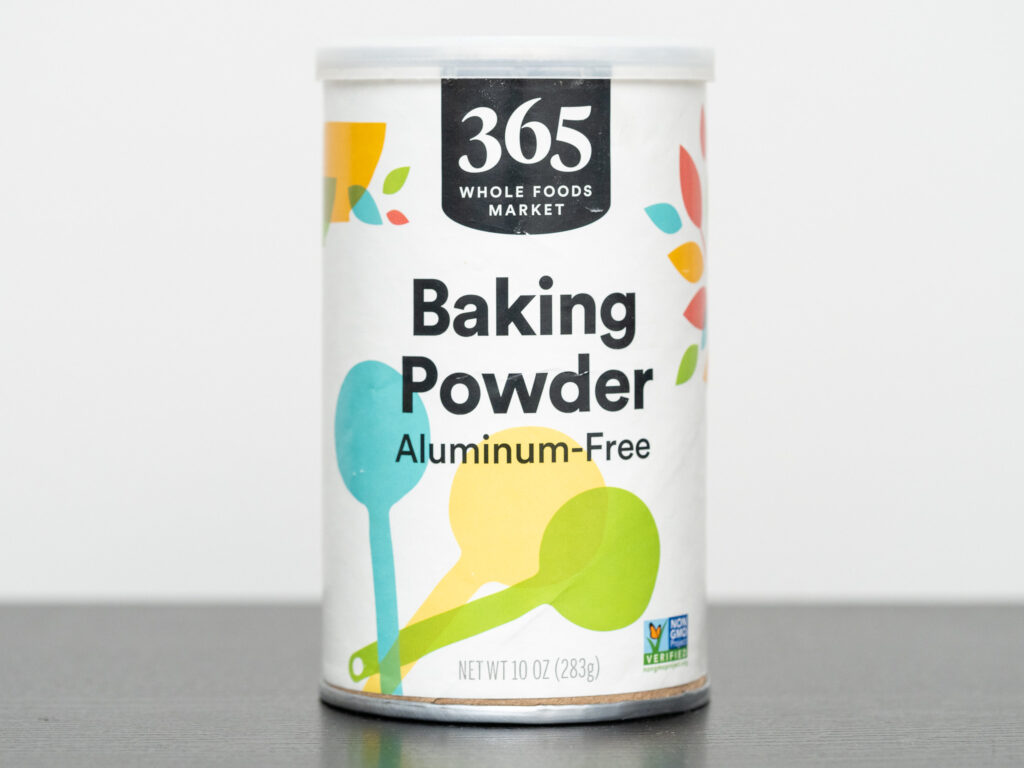
The Basics of Baking Powder
Baking powder is another leavening ingredient used in baking, however, it contains both an acid and a base (typically baking soda) in the same formulation. This indicates that baking powder can produce a leavening reaction in the absence of an external acid in the recipe.
The Chemistry of Baking Powder
The complicated mixture known as baking powder is normally made up of three main ingredients: baking soda (the base), cream of tartar (the acid), and cornstarch (the starch that helps keep the acid and base from reacting too soon by keeping them dry). Baking powder goes through two steps in its chemical reaction:
When baking powder is used with wet materials, its acid and base components react and release carbon dioxide gas when they are faced with moisture. When the combination is heated in the oven, a second reaction takes place that maximizes the creation of carbon dioxide and raises the temperature of the dough or batter.
Baking Powder in Baking
Baking powder is particularly useful in recipes that do not contain an acidic ingredient or when the desired rise needs to occur at a specific stage during baking. This is common in cake recipes, muffins, and other delicate baked goods.
Distinguishing Features and Characteristics
To understand the differences between baking soda and baking powder more clearly, consider the following characteristics:
Acidic vs. Non-Acidic Ingredients
Baking soda requires the presence of an acidic ingredient in the recipe to activate its leavening properties while baking powder is a complete leavening agent and can work in recipes without any additional acid.
Double vs. Single Action
Baking soda undergoes a single chemical reaction when mixed with an acid, providing a quick burst of carbon dioxide. In contrast, baking powder can have both a single and double action, with the first reaction occurring when mixed with moisture and the second when exposed to heat.
Flavor and Texture
Baking soda, if not neutralized properly, can leave a soapy or metallic taste in baked goods. Baking powder, with its built-in acid-base balance, is less likely to impart unwanted flavors.
Recipe Adjustments
To keep the required texture and flavor while switching from baking powder to baking soda or vice versa, the recipe must be adjusted accordingly. This frequently entails taking the substances’ acidic or alkaline qualities into consideration.
Recipe Conversion: Baking Soda to Baking Powder and Vice Versa
When converting a recipe from baking soda to baking powder, or vice versa, it’s important to recognize the differences and make the necessary adjustments to preserve the correct flavor and texture. Here is a basic rule of thumb:
Using Baking Soda in Place of Baking Powder
In order to replace baking powder with baking soda, the recipe will require the addition of an acid. You can use three teaspoons (1 tablespoon) of baking powder for every one teaspoon of baking soda. To make sure the required reaction happens, add an acidic substance to the mix, such as vinegar or yogurt.
Baking Powder in Place of Baking Soda
Use 1/4 teaspoon of baking soda for every 1 teaspoon of baking powder to replace baking powder. To balance the flavors and prevent an overly acidic taste, reduce the amount of acidic substances in the dish.
Common Mistakes in Using Baking Soda and Baking Powder
While baking soda and baking powder are valuable ingredients in baking, they can lead to mistakes if not used correctly:
Overuse of Baking Soda
Using too much baking soda can result in baked goods that have a strong metallic or soapy taste. It’s crucial to measure baking soda accurately and balance it with the appropriate acidic ingredients.
Expired Baking Powder
Baking powder has a shelf life, and if it’s expired or has lost its potency, it won’t effectively leaven your baked goods. Check the expiration date and replace it as needed.
Misunderstanding Double-Acting Baking Powder
Some recipes may call for double-acting baking powder, which contains two different acids for a more controlled leavening process. Using it in place of single-acting baking powder may require recipe adjustments.
Not Mixing Ingredients Properly
When using baking soda, it’s essential to ensure thorough mixing with the acidic ingredients. Inadequate mixing can result in uneven leavening, leading to uneven texture and flavor.
Overmixing the Batter or Dough
Overmixing can deflate the carbon dioxide bubbles produced by the leavening agents, resulting in a denser and less fluffy final product.
Practical Applications of Baking Soda and Baking Powder
Baking soda and baking powder are not limited to their traditional roles in baking. They have several practical applications in the culinary and household realms:
- Cleaning agent: Due to its abrasive qualities, baking soda works well and is safe to use on a variety of surfaces around the house and in the kitchen.
- Deodorizing: Carpets, shoes, and refrigerators can all have their smells captured and neutralized using baking soda.
- Waffles and Pancakes: Baking powder is essential to creating light and fluffy waffles and pancakes.
- Non-Baked Goods: To achieve the right texture and rise, baking powder is added to recipes for pancakes, waffles, biscuits, and other non-baked products.
- Fire Extinguishing: Baking soda can be used as a makeshift extinguisher for tiny grease fires in an emergency.
Conclusion
Knowing the differences between baking powder and baking soda is critical when it comes to getting the desired outcomes from your recipes. Baking soda is a simpler, single-acting leavening agent that requires an acidic component to activate its carbon dioxide creation, whereas baking powder is a more complicated, double-acting leavening agent that comprises both an acid and a base. Understanding when and how to use these leavening chemicals, as well as how to change recipes as necessary, is the key to good baking.
Baking soda and baking powder serve diverse functions and have distinct applications, not only in the culinary realm but also in a number of home and practical applications. With a solid understanding of their characteristics and functions, you may confidently navigate the world of baking and experiment with various recipes to create delicious and well-textured baked goods.

